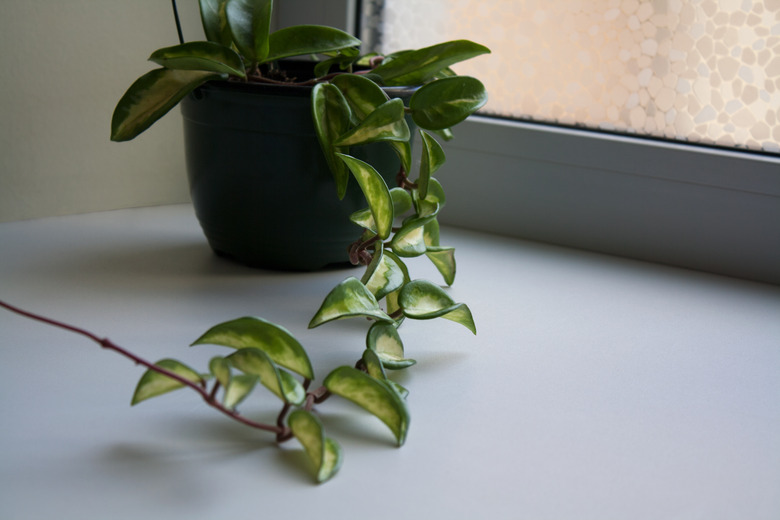How To Care For A Hoya Plant
We may receive a commission on purchases made from links.
Hoya (Hoya spp.), also called wax plant, has fleshy leaves and clusters of star-shaped flowers that look like they are cast from that glossy substance. It is sometimes a shrub but mainly a vining plant native to tropical Asia, New Guinea and Australia.
The hoya plant climbs or cascades to 20 feet or more. Its leaves range in length, according to species, from 1/2 to 10 inches and it has night-fragrant flowers in diameter from 1/2 to 3 inches. Hoya's hardiness varies across U.S. Department of Agriculture plant hardiness zones 10 through 12, depending on species and cultivar, but it is most often grown as a low-maintenance houseplant.
Hoya Light Requirements
Hoya Light Requirements
Due to having rain forest origins, Hoya plants don't tolerate much direct sun, but they do require very bright light to bloom. To provide the ideal environment for your plant, place it on an east-facing windowsill where it will receive sunlight for about three hours in the early morning and bright, indirect light for the rest of the day. It will also flourish under grow lights timed to run for 12 to 16 hours per day. During the summer months, you can hang the plant beneath a tree or porch roof where the sun's rays only reach it during the early morning or late afternoon.
Hoya Watering Requirements
Hoya Watering Requirements
In its native environment the Hoya often grows on trees, so it prefers a fast-draining potting soil, such as a cactus mix. Water the soil thoroughly, but wait until the top one-third to one-half of it dries before you water the plant again. Add 1/2 teaspoon of a high-phosphorous plant food such as 12-55-6 to every gallon of water you use during the spring and summer. Don't fertilize the plant in fall and winter unless it is under grow lights during those seasons.
How to Encourage Blooms
How to Encourage Blooms
Keep your plant slightly potbound, as it is more likely to bloom if its roots are a bit crowded. Hoyas usually flower during the spring or summer, although some types can bloom intermittently all year given the proper conditions. Don't move your plant after it has begun to set buds, or it may drop them. Refrain from pinching or snipping off the spent flowers, as the short and leafless stems on which they appear – also called spurs or peduncles – will produce more flowers in subsequent years if they aren't broken off.
Management of Pests
Management of Pests
Your hoya may be bothered with insects such as aphids, mealybugs, or scale, which respectively resemble green lice, bits of fluff, or brown bumps. Because hoya plants are sensitive to many chemicals, and may be damaged by their use, it's best to use less-toxic methods of pest control. Place your plant under a stream of running water to rinse off aphids and mealybugs. With a plastic card or your fingernail, gently flick off scale insects.
